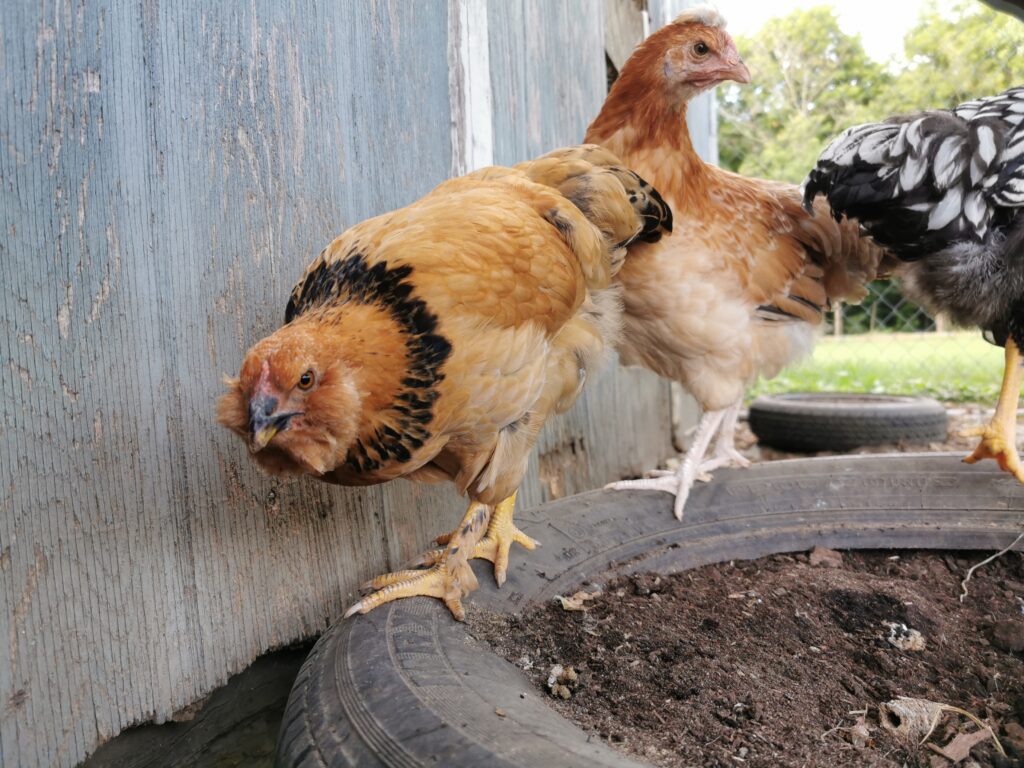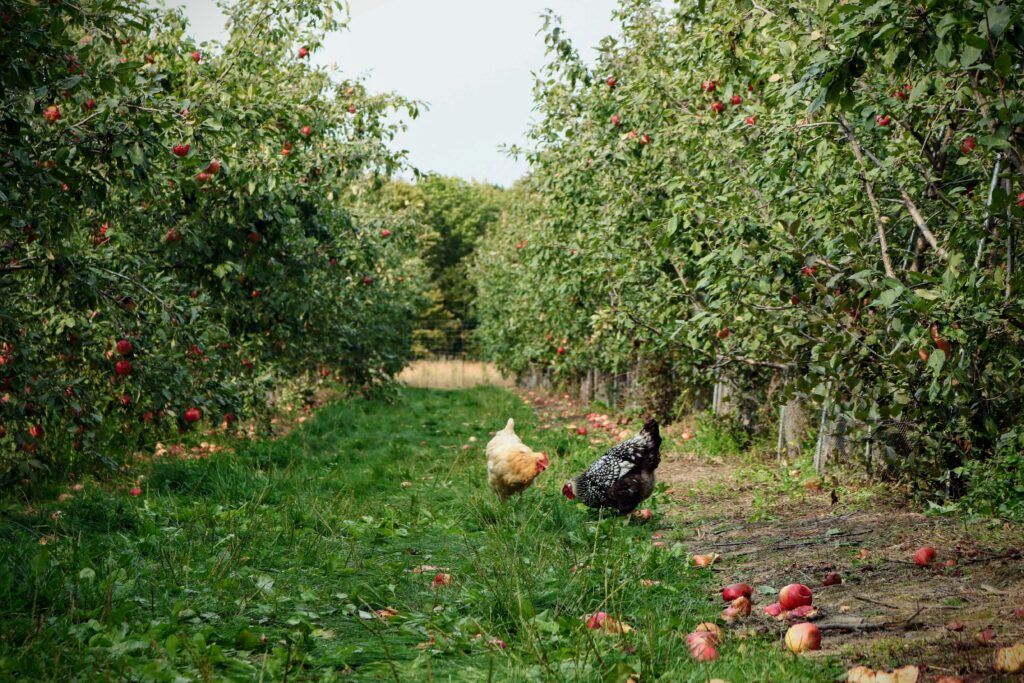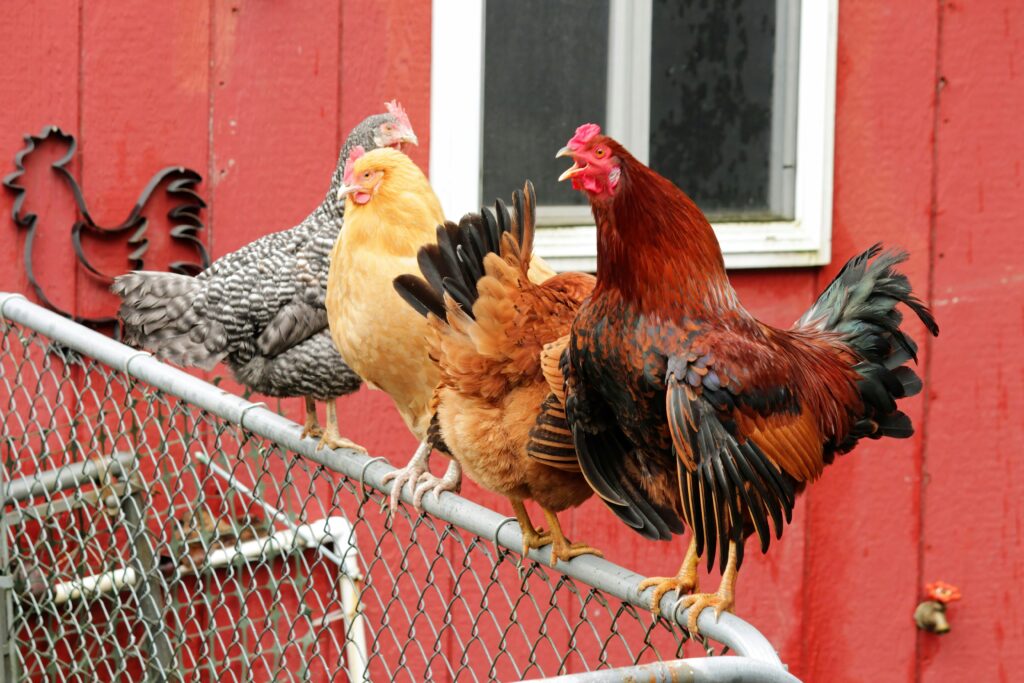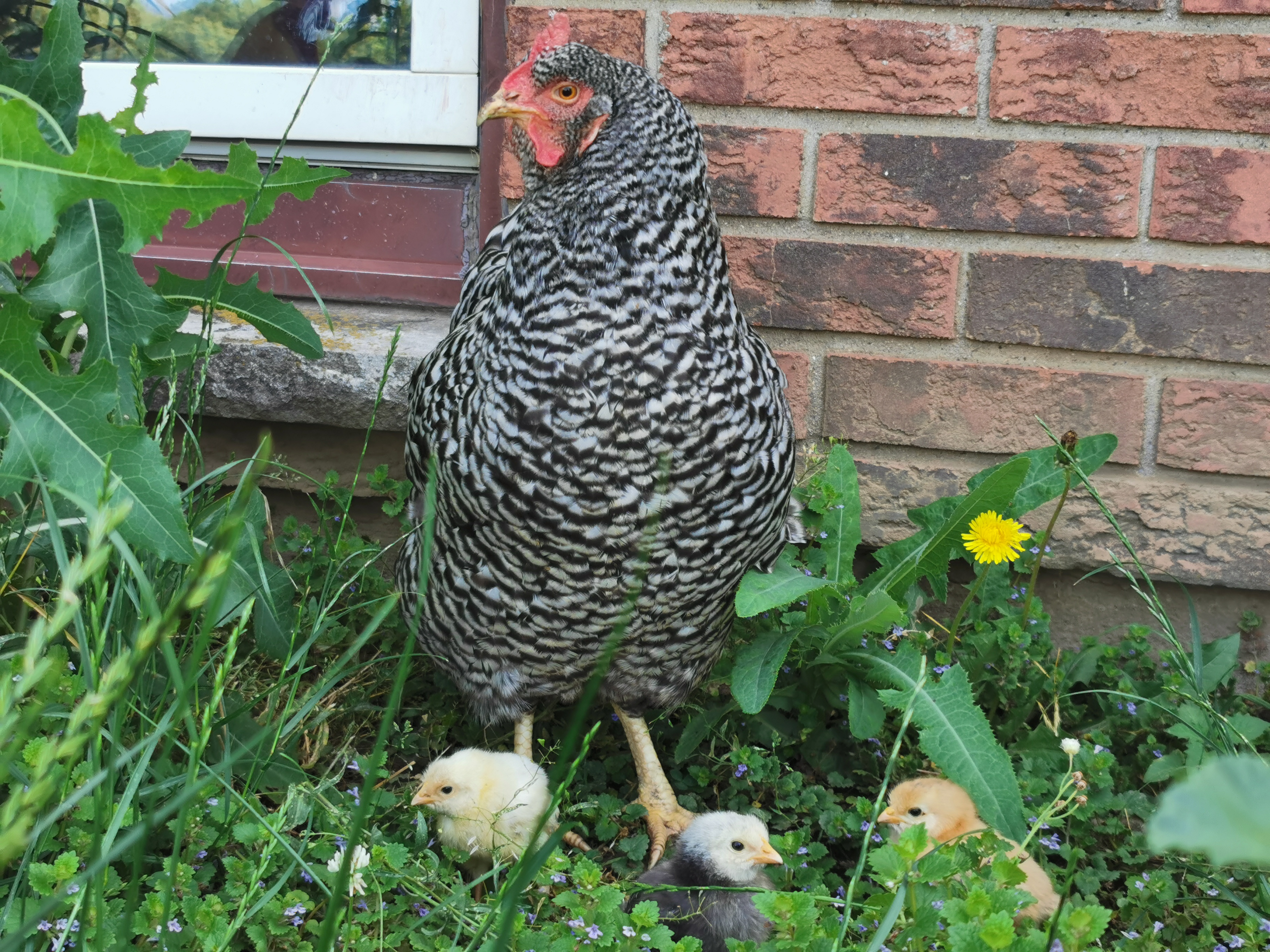Backyard chickens are an excellent first step if you want to own livestock on your homestead or keep fresh eggs. They’re easy to care for and maintain, and extraordinary if you have little ones who want to help and get involved. I know that they’re a significant part of my childhood memories.
No matter where you are and what level of knowledge you have of them, this blog post will help you understand further what these cute, feathery friends need to be a happy and healthy addition to your homestead. So read and grow along.
Crows Crossing is a participant in the Amazon Services LLC Associates Program, an affiliate advertising program designed to provide a means for sites to earn advertising fees by advertising and linking to amazon.a.
Doing Your Research
You’re reading this, so you’re already on the right track. I’ve been raising chickens since I was a kid running around on my grandparents’ farm. My knowledge of them is extensive. I’ll break down in this post a few things to consider when you’re a beginner wanting to get into chicken keeping.
You can also pick up some books at a local library or read other great posts from bloggers with lots of knowledge. You can never know enough, and there will be things you will encounter that you don’t. That’s okay – we all must start somewhere and learn as we go. The information in this blog post will provide an excellent foundation that will help keep your chickens happy.
Backyard Chickens Are A Long-Term Commitment
A chicken’s life span depends on whether you decide on broilers (meat birds) or layers. Depending on the breed, meat birds are culled after 6-8 weeks, and laying breeds can live anywhere from 4-8 years. This past year, I had a hen make it to almost 10, which is rare but possible. You have to think about this when deciding to keep chickens. Are you prepared to have them for that amount of time?
Getting The Coop Ready
Besides caring for their everyday needs, the coop is the most important thing for keeping chickens. It becomes a safe place for them if they live in extreme heat or cold. If you’re like me and live somewhere where both can occur, you’ll need a coop that can release heat in the summer and insulate your flock in the winter.
Depending on your carpenter skills, you can buy or build your coop. I turned an old insulated shed into a coop for my flock because building is not my forte. Chickens aren’t picky as long as the coop is ventilated (has a way for the air to circulate) and free from drafts. It doesn’t have to be beautiful, but you can decorate it extravagantly if you’d like.

Should I Heat The Coop When it Gets cold?
I see this question asked a lot, and this mistake made a lot. That’s why I wanted to bring it up. Backyard chickens self-regulate their temperature, so if a coop is insulated and doesn’t have drafts, they don’t need or want extra heat. Seeing them out in the cold may be challenging, but if you heat their coop, you’re messing with their ability to self-regulate their temperature. If a draft hits them when the coop is heated, or they decide to go outside – they could go into shock since the temperature is so different, leading to sickness or even death.
I have more tips on having a flock stay warm and safe during the winter; if you’d like to check it out, you can here:
Surprisingly Easy Ways To Keep Chickens Warm In Winter
Nesting Boxes and Roosts:
You’ll need to accommodate nesting boxes with layers in the coop. I would say that you should have 1 for every three or so hens… But my 30 hens, despite having 12 nesting boxes, only use 2-3. For some reason, chickens would much rather use the one their friend is using than the perfectly free one beside them.
Haha, such is life. You can get creative with them; they need a safe place to lay. You can use milk crates or even bigger buckets turned on their side. Just ensure there is enough straw in the box for them to lay.
If your ladies aren’t laying where you want them to, I will put an egg they’ve already laid in the spot where I want them to. Once they see an egg is already there, they’ll be more likely to lay there, too.
You’ll also need to put a roost in their coop. Roosts are important for chickens’ feeling of safety; they use them at night to get off the ground.
Again, chickens aren’t picky; they don’t have to be pretty. You can use an elevated bar or a narrow wooden plank. They need to be at least an inch thick. It should be big enough that they can stay up by it either being too thin or too wide for their feet. I put together a couple of makeshift wooden ladders – if you’re somewhere cold, I suggest something other than metal.
Roosts should also have enough room to accommodate all of your chickens. It ensures there’s no fighting/pecking. You’ll also find that the most dominant hens, or if you have a rooster, will be at the top of the roost (literally).

Run or Free Range Backyard Chickens?
If you build a run for backyard chickens, a good rule of thumb is to provide ten square feet of run space per chicken. Roofing the run is an excellent idea if you deal with birds of prey like hawks and eagles.
Free range is a great option if you don’t have gardens they could get into and ruin – because they will. Is the mulch you just put down all nice, neat, and tidy? Not anymore; chickens will scratch it and scatter it around to see if there are any bugs underneath it.
Backyard chickens can and will poop on everything you love, haha. They’ll get onto decks and driveways. You and the delivery drivers will have to avoid dodging poop if you decide to let them run around. Also, consider how close you are to neighbours and whether or not said neighbours would be okay with them on their lawn, pooping on everything they love too.
I say all this, but I did free-range until a year ago. There are lots of great benefits to having free range as well. They’ll be much happier and healthier, digging up bugs all day and foraging for food, and it’s also fun to watch them do their thing.
Free-range could come with a shorter lifespan, too, though. If you’re in a high-traffic area, they could get hit by cars, or I stopped doing it because my favourite rooster, Waldo, got taken out by a coyote. So, after that emotional turmoil, I decided to get a run for them. They’re much safer, and I have more peace of mind.

Deciding On The Age, Sex And Breed
When you purchase backyard chickens from hatcheries or their distributors (usually the local feed mills/country stores), you can get two ages: day old and ready to lay.
Chicks are adorable, but are you ready to have them in your house until they’re ready to go into the coop? Usually, this is eight weeks, and depending on how many you have, making space somewhere warm until they grow their feathers can be tricky.
Here’s my blog on how to raise chicks for more information: Ultimate Guide You Need To Read Before Raising Baby Chicks
Ready to lay are nice because they’re already at the age where they can be put out in the coop, but fewer breeds are available. Unless, of course, you go onto Kijij or Craigslist. Then you’d have to worry about how reputable the people are and if their chickens are healthy.
Food and Water
Ensuring backyard chickens have a constant supply of food and water is essential. Are you ready to go to the coop multiple times daily to ensure they have what they need, even in extreme weather?
Here’s a feeding guide for you all to break down the different life stage feeds:
- Chick starter (0-8 weeks) – If you decide on chicks, they’ll need to be on chick starter feed until they reach eight weeks or until they have all their feathers.
- Grower feed (8 weeks – 18 weeks) – Grower feed has extra protein needed after chicks gain all their feathers until they start laying. That may be 18 to 20 weeks, depending on the laying breed you choose and the bird in general.
Laying pellets or crumbs (after hens start laying): Laying feed is essential for layers; it provides them with the vital nutrients and protein to continue laying daily. Whether you choose pellets or crumbs, it’ll be up to your chickens. They prefer what they’re used to and may not take well to being switched back and forth. - Broiler feed (for meat birds)—This won’t apply to you if you’re getting layers. Meat birds need a lot of protein, and broiler feed provides that to ensure they reach the weight they need for culling.
I always have laying crumb and scratch grain available for my hens; I like the variety it supplies them and the option to add more scratch grain into their feed in the winter. The scratch grain helps them keep warm and gives them something to do in the winter.

Supplements For Backyard Chickens
- Grit – chickens don’t have teeth to grind down food, so grit is crucial in chicken digestion. If you free-range your chickens, they’ll naturally pick this up when scavenging, but it’s always a good idea to have it around – especially in the winter.
- Dried spices, such as cinnamon, cayenne, and garlic powder, are excellent additions to chicken diets. Cinnamon is great for respiratory health, cayenne is ideal for blood circulation, and garlic is great for boosting chickens’ immune systems—it even repels mites and lice.
- Treats are great for chickens; they add something fun to their diet and take care of any vegetarian food waste you might have.
- Oyster Shells are a great supplement for egg production. They add much-needed calcium to ensure hens have enough to lay strong eggshells, avoid breakage, and avoid becoming egg-bound. Here are some oyster shells I use!
This concludes my steps for keeping chickens happy and healthy. I hope this guide has provided you with the knowledge and confidence when you start your own flock at home. Hopefully, they give you as much joy as they do me! Please feel free to leave a comment sharing your experience with your own flock, or if you have any questions!








